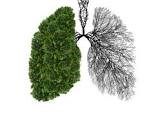4 Things You May Not Know About Inhalers
Lots of people use them, but are they being used correctly? Misuse of inhalers may decrease their effectiveness and result in expensive dental bills.
Inhalers have become increasingly popular and are often prescribed for a variety of respiratory issues. You do not need to have an asthma diagnosis to benefit from them. They are often used as a supplemental medication when you are ill, such as with pneumonia, bronchitis, RSV, a tight chest with cough, hay fever, or a chronic lung condition, such as COPD (Chronic Obstructive Pulmonary Disease) to name a few.
- Prime your inhaler. While the production of inhalers is getting better each year, that first dose may come out in an uneven and unsteady stream. If this is the first time you have used your inhaler today, priming it initially will ensure you get the full amount of the medication. Shake your inhaler a minimum of 5 times. Hold it away from your face and depress the top of the canister. Now, your first puff is ready to deliver a full dose.
- Wait a FULL MINUTE between “puffs”. Medications like albuterol are smooth muscle relaxers and need time to get into your lungs and start expanding your airways. After 1 minute, the airways should be more open, and it will enable the second dose to be delivered further down in your lungs. Follow your prescription- if it says “take 4 puffs” you should wait a full minute between each one. This allows the medication to work better by accessing more of your airways.

- The goal is to reach the “tree leaves”. Your lungs resemble upside-down trees, with the branches starting large, and getting progressively smaller until you reach the leaf portion. These ‘leaves’ are called alveolar sacs. They are at the end of the bronchial tubes, and it’s where the oxygen exchange happens.
- Always rinse your mouth well after use. Inhaled asthma medications increase enamel erosion and tooth decay. According to the American Dental Association, this is a result of two factors; less saliva in the mouth to protect the pH level of the teeth, and the sticky residue it leaves on the enamel surface.
Always consult your doctor when taking any medications and follow the prescription label.
WOW! – GREAT INFORMATION!!! I have used an inhaler before and the doctor that prescribed it didn’t go into detail on HOW to use it. Like you stated, when I picked it up from the pharmacy, mine just stated to use ‘two puffs’ twice a day. Now armed with this information I know I’ll get the most out of my RX in the future!
I am happy to help! Doctors often have very limited time with patients, and unfortunately, lots of education opportunities are missed. I hope you are feeling better!
I was not told to rinse after use, sure am glad that I tuned into this article, thank you Gina for your helpful information !!
Very interesting topic, thanks for putting up.